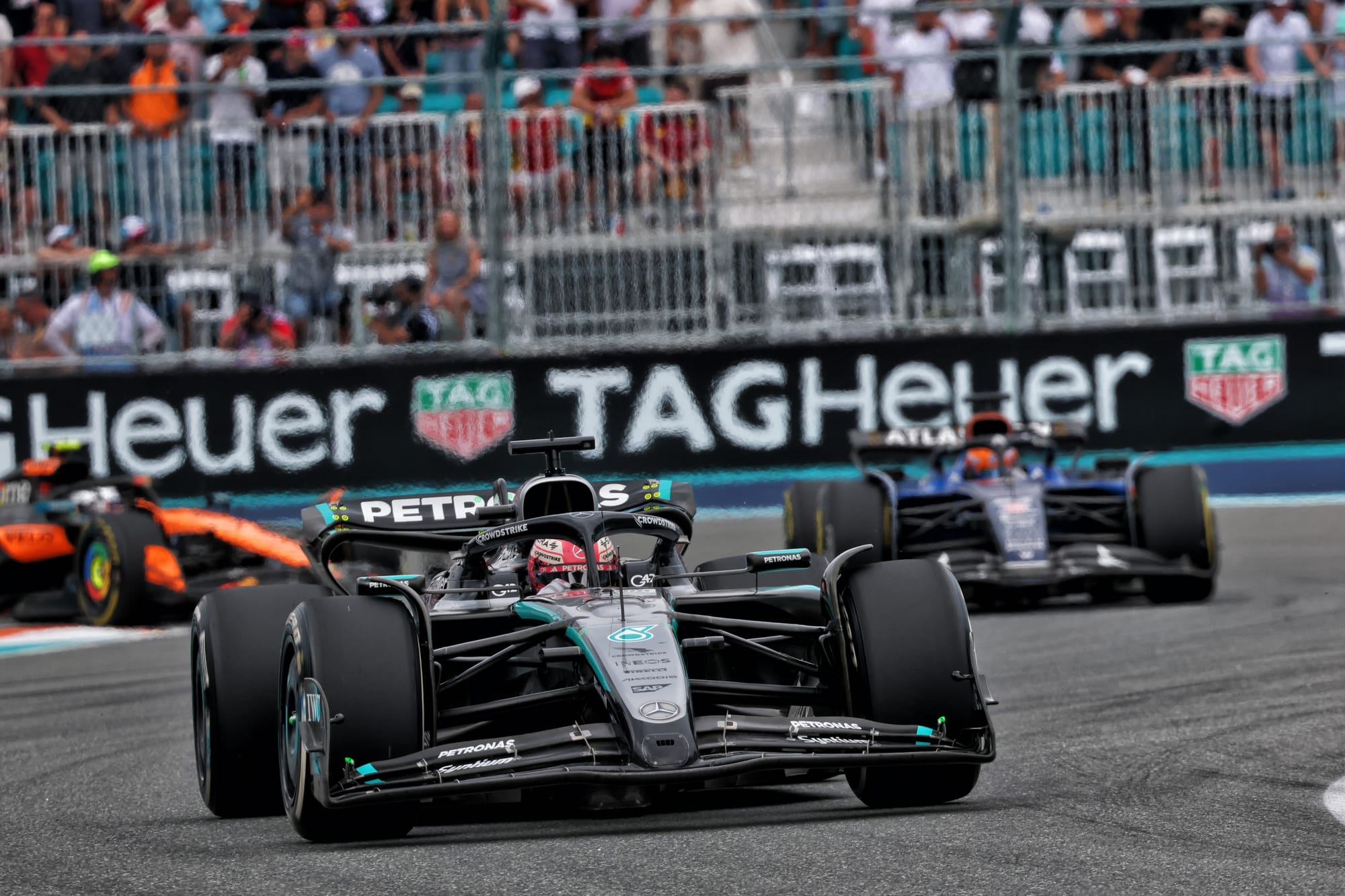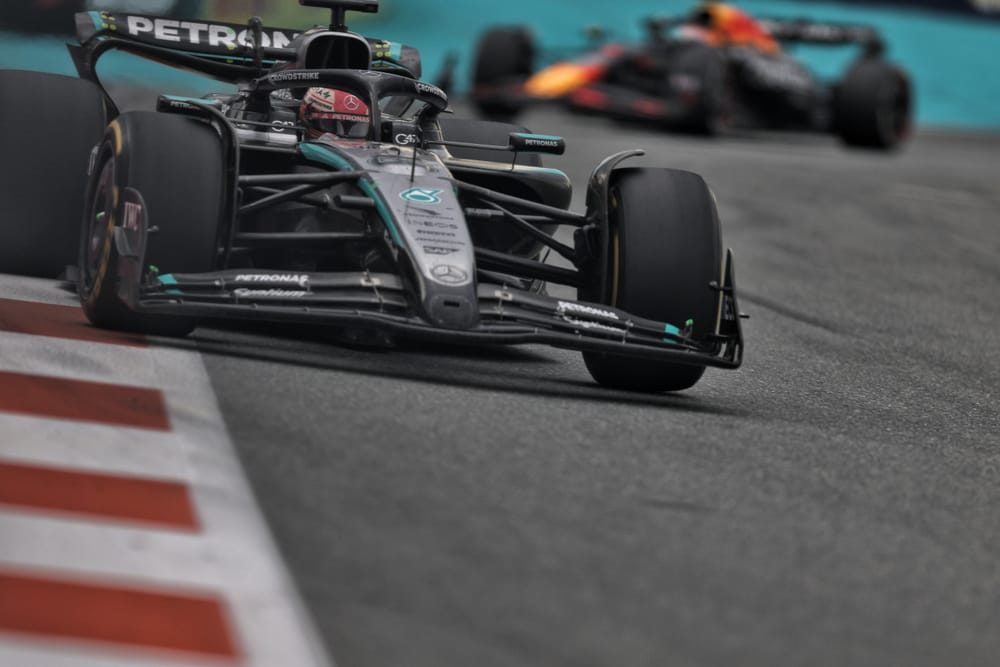Red Bull's protest into the result of Formula 1's Miami Grand Prix has been rejected as unfounded - which means Mercedes driver George Russell keeps his third-place finish.
Red Bull believed during the race already that Russell had got away with a yellow flag infringement, failing to slow sufficiently, and told its driver Max Verstappen to stay within five seconds of Russell in the final stint in case of a post-race penalty.
It then protested Russell's result on the basis of a lack of a "reduction in speed" - defining which as relating to F1 regulations was a key part of the stewards' verdict regarding the protest.
"We felt George Russell has done something which is in breach of the regs, the way they’re written, that’s why we’ve put a protest in today," said Red Bull team principal Christian Horner.
"More than anything, you want clarity. The regulations say there should be a 'reduction in speed' - [it] doesn’t talk about a lift, doesn’t talk about time off-throttle, talks about reduction in speed, we very clearly did that and that’s why Max flagged it immediately from what he saw in the cockpit."
The stewards' verdict confirmed that this had been Red Bull's argument in the hearing - that Russell didn't adhere to the regulations requiring a "discernibly reduced speed".

The relevant article of the F1 sporting regulations, 26.1 a), states: "Any driver passing through a waved yellow flag marshalling sector must reduce their speed and be prepared to change direction. In order for the stewards to be satisfied that any such driver has complied with these requirements they are expected to have braked earlier and/or discernibly reduced speed in the relevant marshalling sector."
Red Bull, represented in the hearing by its head of sporting regulations Stephen Knowles and Verstappen's race engineer (and Red Bull's head of racing) Gianpiero Lambiase - felt Russell going through the yellow flag zone at a higher speed than he had entered it with thus fell foul of the wording of the regulations - and that Verstappen, running behind Russell, complied with its interpretation of that wording.
The stewards said Mercedes' counterargument was that "the common practice accepted by all teams and the FIA" is that a significant lift of the throttle in a yellow flag zone is sufficient and appropriate - and that this was exactly what Russell did.
Mercedes - represented by sporting director Ron Meadows and George Russell himself - also argued Russell's lift was "more significant than what was observed from other cars".
Why was the protest rejected?

Red Bull's protest was rejected as "not founded", with the protest deposit - €2,000, as outlined in article 17.1 of the sporting regs - forfeited as per the rules.
The stewards said Russell's lift was "approximately 25 percent", meaning a reduction of torque of "approximately 30 percent".
His speed through the yellow flag zone was thus "considerably slower than the regular racing speed".
Beyond that, a major part of the stewards' decision was that they disagreed with Red Bull's interpretation of the wording of the rule.
The stewards accepted that Article 26.1 "does not specify" whether the reduction in speed in question is supposed to be a reduction in "absolute speed", i.e. going slower through the yellow flag zone in terms of km/h than the car was as it approached said zone, or a reduction in "relative speed", i.e. going slower through the yellow flag zone than you would have in normal racing conditions.
They have determined the latter to be appropriate, as the former could, depending on the specifics of the layout, "represent non-compliance with the regulations" while being technically fulfilled as a criteria. "For instance," they wrote, "in a braking zone the absolute speed can be reduced without necessarily complying with the [yellow flag] regulations."



